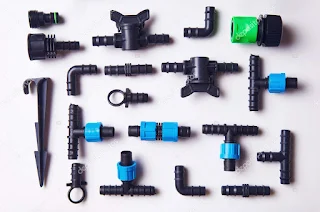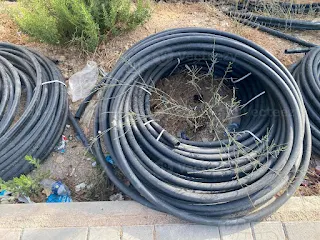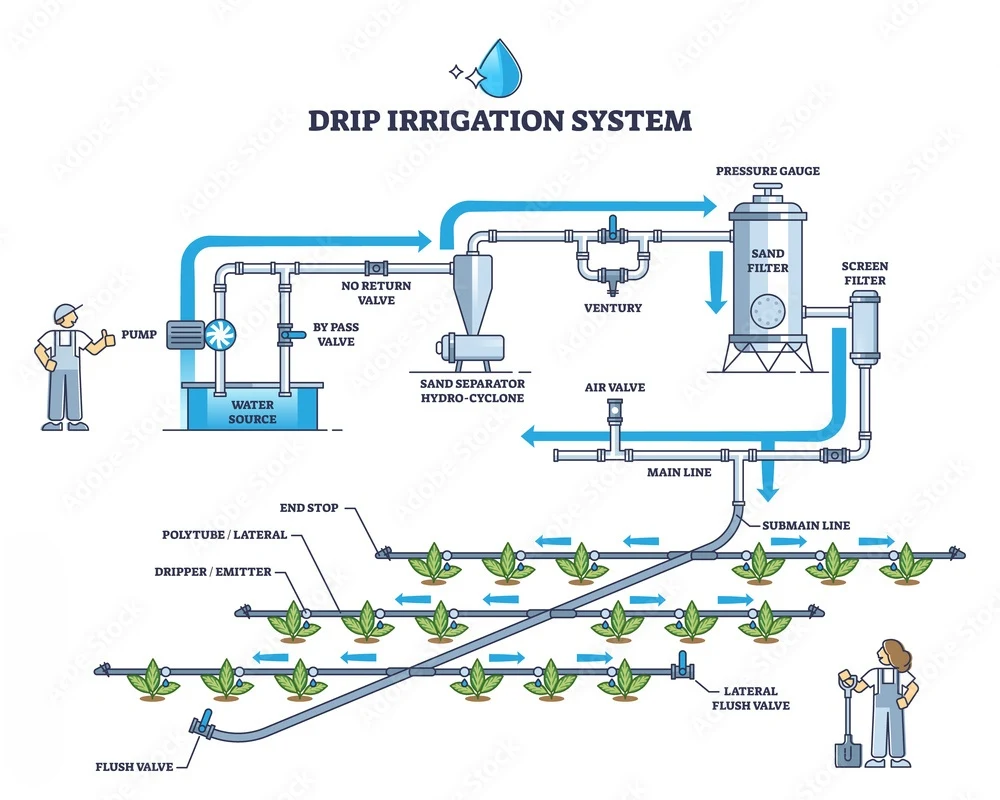Lawns and gardens need a steady and reliable water supply. Using a hose is not necessarily the most efficient method to achieve this. Many landscaping professionals suggest using drip irrigation instead. So, what is drip irrigation? It is an efficient and permanent watering system. Drip irrigation delivers water slowly and directly to the soil and plants, making it a more efficient choice compared to traditional sprinklers. Planning and setup is also easy. Continue reading for useful information in this step-by-step guide.
Step 1: Planning and Design
- Start by measuring the size of your garden and making a well-thought-out sketch or plan of how you want to arrange everything. Take careful note of where you want to place your plants, flower beds, and any other landscaping elements.
- Next, find where your water source is and measure the available water pressure and flow rate. This information will guide you in determining how many emitters you can use and how to set up the system efficiently.
- Also, think about the specific water needs of different plants in your garden and plan your irrigation zones accordingly. This way, you can make sure that each plant gets the right amount of water.
Step 2: Gather Supplies
- You can buy drip irrigation kits, which include all the necessary parts like tubing, emitters, connectors, stakes, filters and pressure regulators. These kits are especially useful for small gardens.
- However, if you are working with a large area, it may be more cost-effective to purchase the individual components separately.
 |
| connectors |
 |
| emitters |
 |
| tubing |
 |
| filter |
 |
| pressure regulators |
Step 3: Prepare your water sources
- It can be any faucet that links to your drip system or any place where water can be drawn off. Connect this water source to your drip system.
- Additionally, be sure to set up a backflow preventer. This device ensures that the water does not flow back into the main water supply, preventing any contamination.
Step 4: It's time to lay the main line pipes
- Depending on how you've planned your layout, unroll the main line tubing and run it around the edge or down the middle of your garden.
- To get the tubing to the right size, use a PVC pipe cutter or a pair of scissors to cut it.
- To keep the tubing in place and prevent it from shifting, use stakes, clips, or hooks to secure it.
Step 5: Set up the delivery tubing
- Extend small distribution pipes from the main line to reach each plant or group of plants.
- Cut the distribution tubing to the appropriate length, making sure to leave some extra space to accommodate plant growth.
Step 6: Set up Drip Emitter and Soccer Hose
- Attach drip emitters or soaker hoses to the distribution tubing, positioning them near the base of each plant. Drip emitters work well for individual plants, while soccer hoses are the best choice for rows of plants or large areas.
- To connect them, you can use a hole punch tool or a drip emitter installation tool to make holes in the distribution tubing and then secure the emitters or soccer hose as needed.
Step 7: Add a Pressure Regulator and Filter
- This gadget ensures that the water pressure going to the emitters is correct, usually around 25 PSI.
- Also, include filters to prevent debris and sediment from clogging the emitters. Filters are especially important when using well water or untreated water sources because they prevent these particles from clogging the emitters.
Step 8: Assemble and Test the System
- Connect all the different parts like emitters, tubing, pressure regulator and filter.
- Turn on the water supply and carefully inspect for any leaks. Also, make sure all emitters are properly watering your plants.
- If necessary, adjust the flow and position of the emitters to ensure that the water is evenly distributed.
Step 9: Mulch and Cover
- Once you've set up the drip system, spread a layer of mulch around your plants. This serves to keep the soil moist and minimize water evaporation.
- Additionally, mulch acts as a barrier against weed growth and enhances the overall look of your garden.
Step 10: Install Timer
- To make things more convenient and water-efficient, set an irrigation timer. This device allows you to establish a precise watering schedule, ensuring that your plants receive water at the optimal time.
Conclusion
Drip Irrigation is an efficient and permanent watering system that delivers water slowly and directly to the soil and plants. By following a step-by-step guide, you can easily plan, set up, and maintain a drip irrigation system for your lawn or garden, ensuring that each plant receives the right amount of water efficiently.
Reference & Resources
(1) Drip Irrigation System - Agriculture irrigation System Manufacturer from Coimbatore https://www.niagarasolutions.in/drip-irrigation-system.html
(2) How to Install a Drip Irrigation System (with Pictures) - wikiHow https://www.wikihow.com/Install-a-Drip-Irrigation-System
(3) Drip Irrigation Essentials: How to Install and Maintain Your System https://gardenbeast.com/drip-irrigation-essentials/
(4) How to Install a Drip Irrigation System - Angi https://www.angi.com/articles/how-to-install-drip-irrigation.htm
(5) Step By Step Drip Irrigation System Installation Guide - Sprinkler School https://school.sprinklerwarehouse.com/design-install/step-by-step-drip-irrigation-system-installation-guide/
(6) Installing a Drip Irrigation System: Step-by-Step Guide - lawnfly.com https://lawnfly.com/blog/installing-a-drip-irrigation-system-step-by-step-guide


.png)

.jpg)

.jpg)



.jpg)


0 Comments